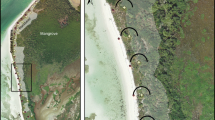Abstract
The use of light traps in sampling moth populations is an established technique used by entomologists and ecologists. However, trap data partly reflect the variable attractiveness of UV light to different species of moth. There are also potential problems of the practicality and expense of running traps in certain locations.
An alternative method of recording moth populations is developed, using a modification of the transect count technique used for butterflies (Pollard and Yates, 1993) and recently applied to moths (Spalding, 1997). During transects, moths were observed by torch-light in a 5 by 5 m box, before the recorder walked on for 10 paces, and recorded moths in the next 5 m box. The transect approach was tested in the field, alongside traditional light trap and sugar methods.
Transects recorded moth species for relatively little effort, produced repeatable measures of relative density, and provided habitat-specific data. This approach is likely to provide a valuable addition to light trapping in biodiversity inventories, species surveys, and in monitoring the effects of habitat management for conservation.
Similar content being viewed by others
References
Baker, R.R. and Sadovy, Y. (1978) The distance and nature of the light trap response of moths. Nature 276, 818–82.
Bowden, J. (1973) The influence of moonlight on catches of insects in light traps in Africa. Part 1. The moon & moonlight. The Bulletin of Entomological Research 63, 113–128.
Bowden, J. (1982) An analysis of factors affecting catches of insects in light traps. Bulletin of Entomological Research 72, 535–556.
Fry, R. and Waring, P. (1996) A guide to moth traps and their use. The Amateur Entomologist, Volume 24.
Goater, B. (1986) A new technique of sugaring. The Entomologists Record & Journal of Conservation 98, 37.
Groombridge, B. (1992) Global biodiversity: status of the Earth's living resources. London: Chapman & Hall.
Heath, J. (1965) A genuinely portable MV light trap. The Entomologists Record & Journal of Conservation 77, 236–238.
Heath, J. (1983) The moths and butterflies of Great Britain and Ireland (Volume 1). Colchester: Harley Books.
McGeachie, W.J. (1988) A remote sensing method for the estimation of light trap efficiency. Bulletin of Entomological Research 78, 379–385.
Persson, B. (1972) Longevity of Noctuid moths in relation to certain day-time weather factors. Oikos 23, 394–400.
Pollard, E., Elias, D.O., Skelton, M.J. and Thomas, J.A. (1975) A method of assessing the abundance of butterflies in Monks Wood NNR In 1973. Entomologists Gazette 26, 79–88.
Pollard, E. (1977) A method of assessing changes in the abundance of butterflies. Biological Conservation 12, 115–34.
Pollard, E. (1988) Temperature rainfall and butterfly numbers. Journal of Applied Ecology 25, 819–28.
Pollard, E. and Yates, T.J. (1993) Monitoring butterflies for conservation. London: Chapman & Hall.
Robinson, H.S. and Robinson P.J.M. (1950) Some notes on the observed behaviour of Lepidoptera in the vicinity of light sources together with the description of a light trap designed to take entomological samples. Entomologists Gazette 1, 3–20.
Skinner, B. (1984) Colour identification guide to moths of the British Isles. Viking.
Spalding, A. (1997) The use of the butterfly transect method for the study of the nocturnal moth Luperina nickerlii leechi Goater (Lepidoptera: Noctuidae) and its possible application to other species. Biological Conservation 80, 147–152.
Sutton, S.L. and Beaumont, H.E. (1989) Butterflies and moths of Yorkshire distribution and conservation. Doncaster: Yorkshire Naturalists Union.
Thomas, J.A. (1983) A quick method of estimating butterfly numbers during surveys. Biological Conservation 27, 195–211.
Turner, J.R.G., Gatehouse, C.M. and Corey, C.A. (1987) Does solar energy control organic diversity? Butterflies, Moths and The British Climate. Oikos 48, 195–205.
Waring, P. (1995) Wine-roping for moths. Butterfly Conservation News 60, 27.
Author information
Authors and Affiliations
Rights and permissions
About this article
Cite this article
Birkinshaw, N., Thomas, C. Torch-light Transect Surveys for Moths. Journal of Insect Conservation 3, 15–24 (1999). https://doi.org/10.1023/A:1009674321237
Issue Date:
DOI: https://doi.org/10.1023/A:1009674321237




